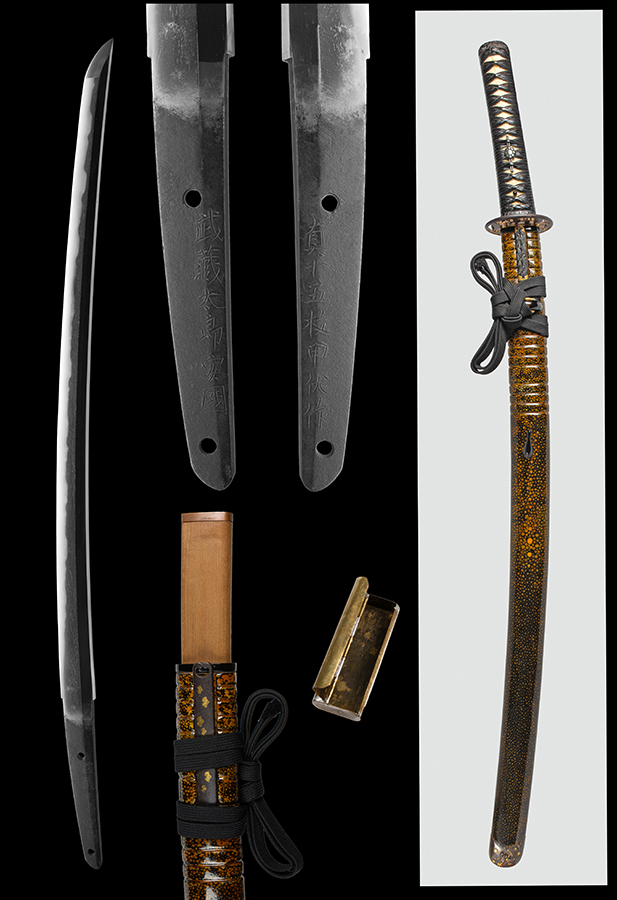|
| |||||||||||||||||||||||||||||||||||||||||||||||
Hamon : Ko-nie deki gunome midare. Hako midare formation are mixed in. There are ashi and sunagashi. The hamon begins with a subtle yakidashi and there is mizu-kage, a trait of this smith.
Boshi : Midare-komi with a short return. The nioi-guchi is clear and there is hataraki.
Kitae : Itame hada with a clear and flowing forging pattern. Masame is mixed in and there is plentiful ji-nie.
About this sword : A fine wakizashi by Musashi Taro Yasukuni with an exciting Higo koshirae. Yasukuni was most active around Genroku (1688-1704). He is a famous smith, ranked as Jo Saku by Fujishiro and 3.5 million yen in the Toko-taikan. Yausukuni was born in 1650 and his common name was Yamamoto Tota. He was the son of Fujita Hiroshige and the grandson of Yamamoto Kinzaemon Hiroshige. They lived in the Hachioji area of Musashi. He studied under Omura Kaboku and was commissioned to make swords for the Mito Daimyo, Tokugawa Mitsukini and in Edo for Togawa Michitomi. Yasukuni is known for recording his forging method on the nakago of his work. That is the case with this example. The ura mei states: 真十五枚甲伏作 "made in kobuse technique by using steel folded 15 times". He passed away in 1730 at the age of 81. This ubu blade is finely crafted and has no kizu. It is quite healthy and has a kasane of 8mm. There are a couple of inactive rust spots but overall, the blade is in nice old polish.
The koshirae is a Higo example with a special secret feature. The saya has a removable liner that conceals a brass hinged money box. The same-gawa is in perfect condition and with the black leather ito, makes a striking visual impression. The fuchi kashira set is a fine early Higo Nishigaki example. The shakudo menuki features the Hosokawa mon. The iron sukashi tsuba is in a pine tree motif. There is an iron kozuka and a wari-kogai. The ko-jiri is shibuichi and has a wonderful taka-bori of a Hannya (female demon) with fine inaly work of shakudo, copper and gold. The entire koshirae is a collection in and of itself. Here we have a historical snap shot of what a man of means would have worn in the Edo period and how provisions to keep secret resources were needed.
The tsunagi (hand made place-holder wooden blade) has some information as well as the saya sleeve. The kanji on the tsunagi nakago states it was made for the 清水清一 (Kiyomizu Kiyoichi) family in Showa 55 (1980), by the Sakura bridge of Musashi. It also states 研出鮫拵記念"polished same koshirae commemorate". The hinged saya sleeve has the name of three gods on one side. The other side states it was made by Musha Naoden Eishin-ryu (a school of Iai-do), Tougou Kiyoken saku, Iai instructor at 7th dan. 無雙直傳英信流 居合道教士七段 東鄉清剣造 The coin box has the direction of the box (for fitting it inside the end of the saya) stated on one side. Specifically, the direction it should face the kissaki切先方. The other side states "Kiyomizu family generations to keep "清水家 .. 重代 .. ". The inside of the ki habaki (damaged) is dated Showa 55. The commission or conservation of this koshirae would have cost a handsome sum and the records left are wonderful to study and preserve.
A fantastic opportunity to own a wonderfuly mounted blade by a famous smith. This is an ubu and zaimei work and quite high quality. It comes with a NBTHK Tokubetsu Hozon papers for the blade, storage bags and tsunagi for the koshirae.
$6950






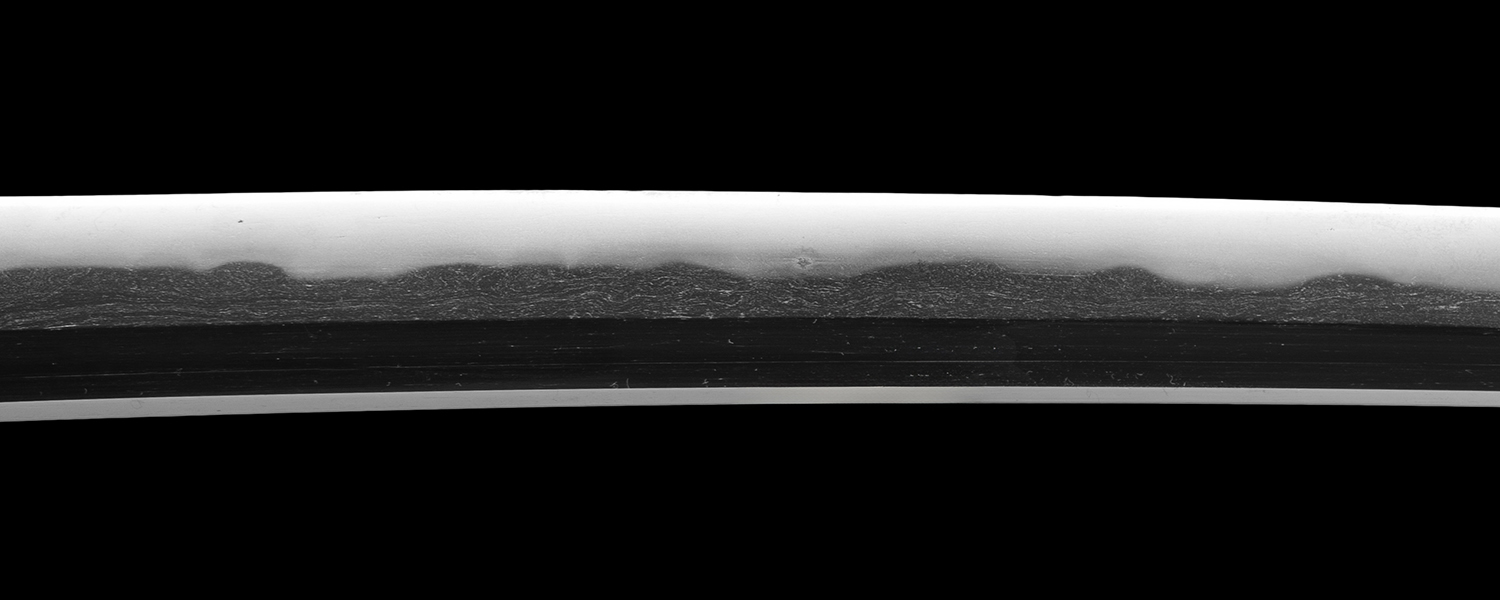

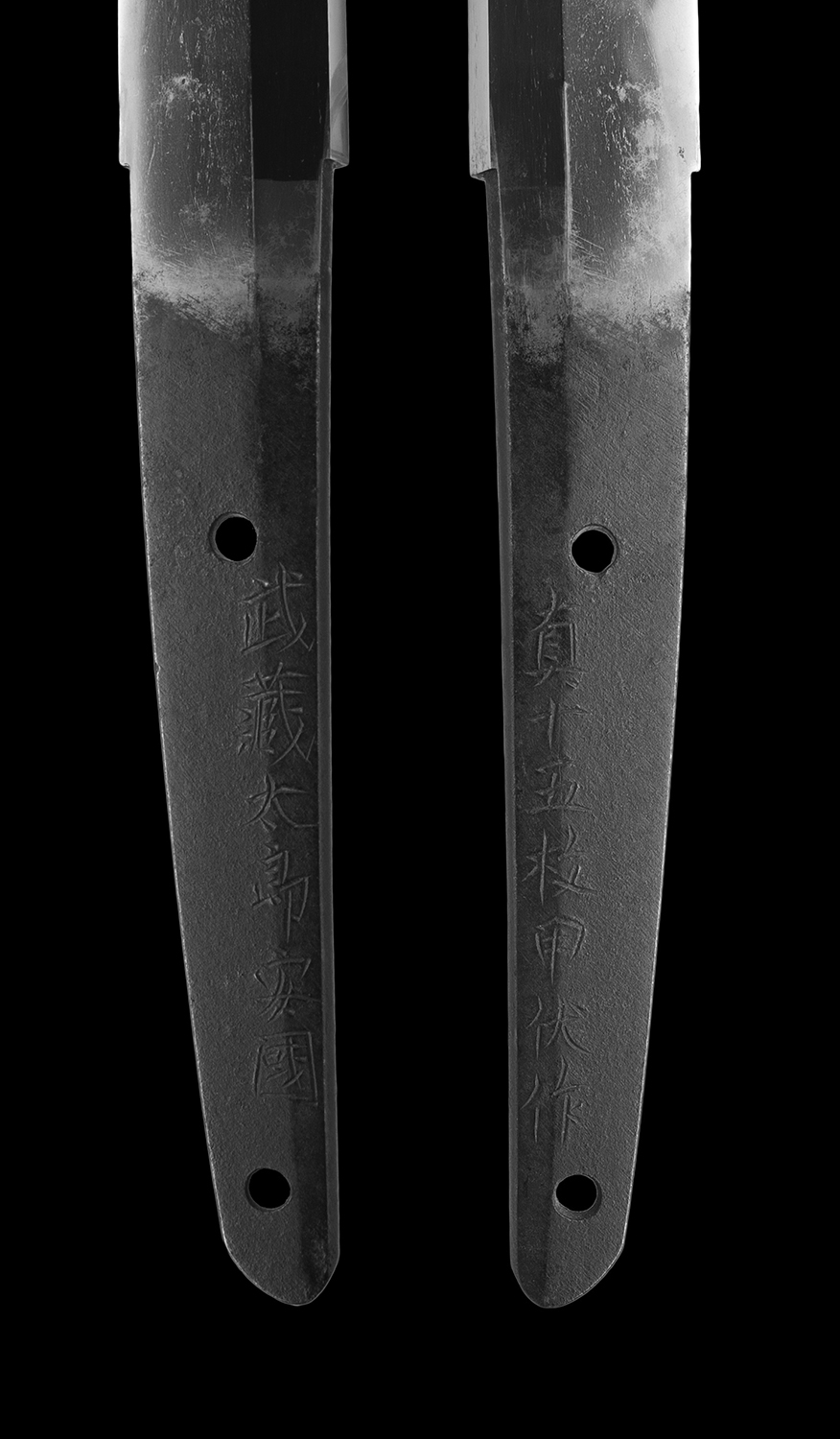


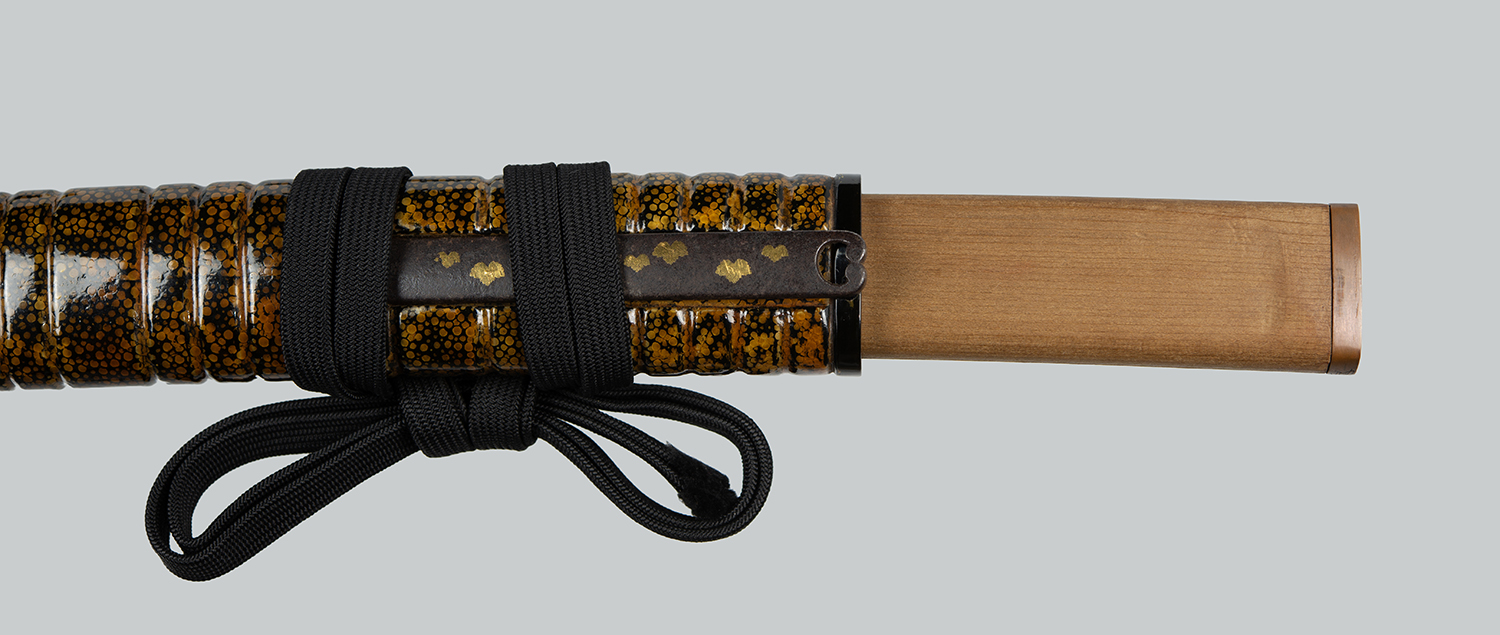
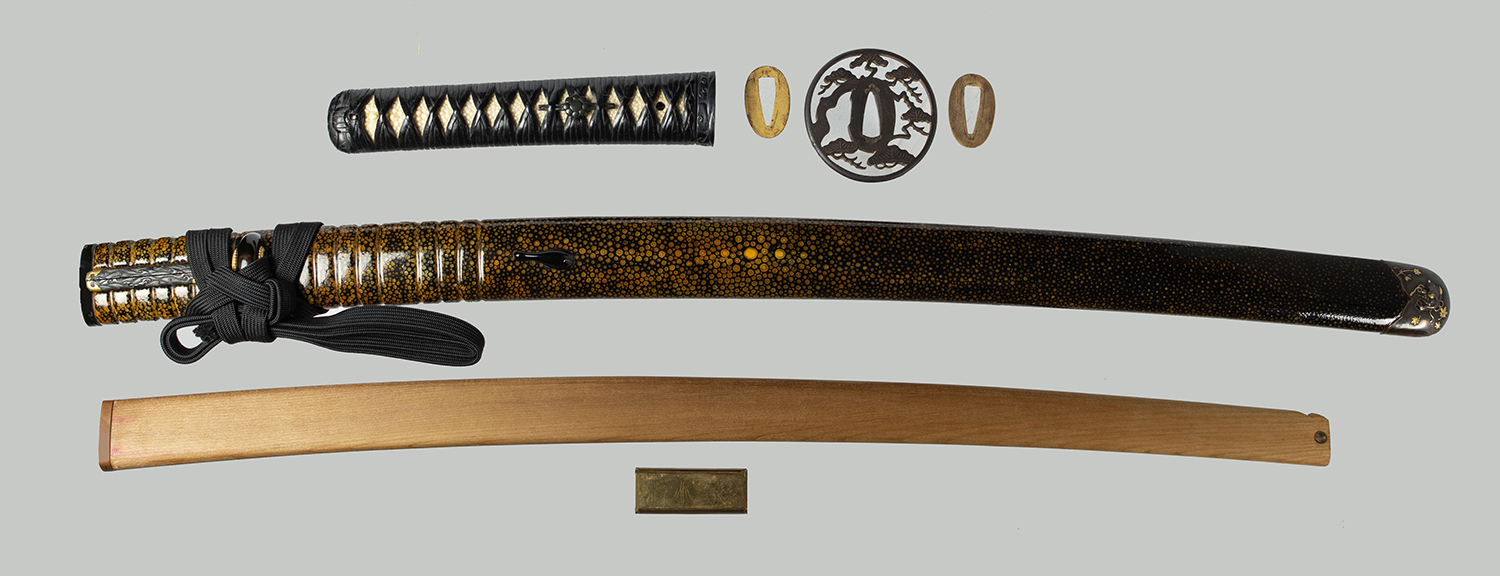
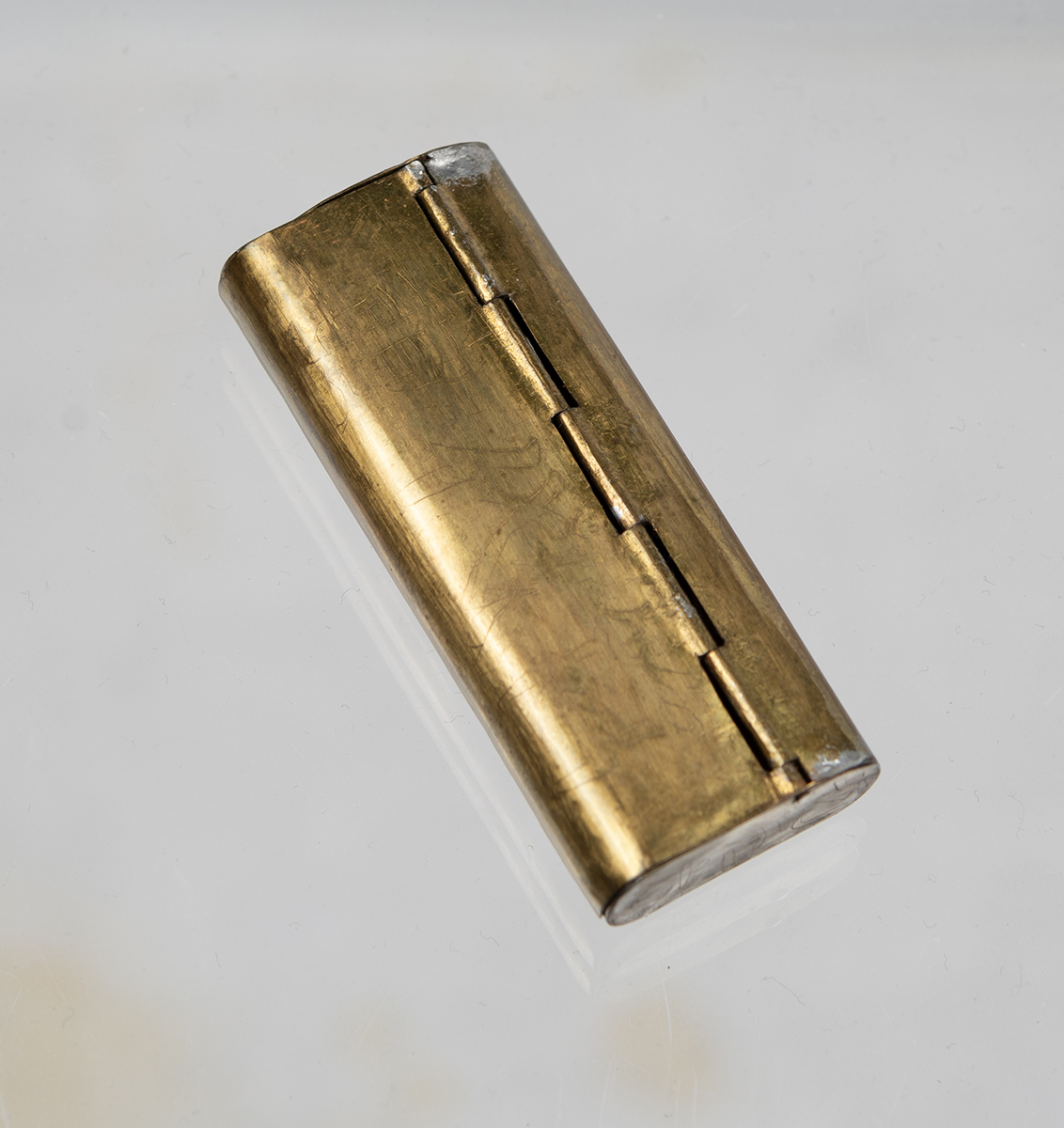
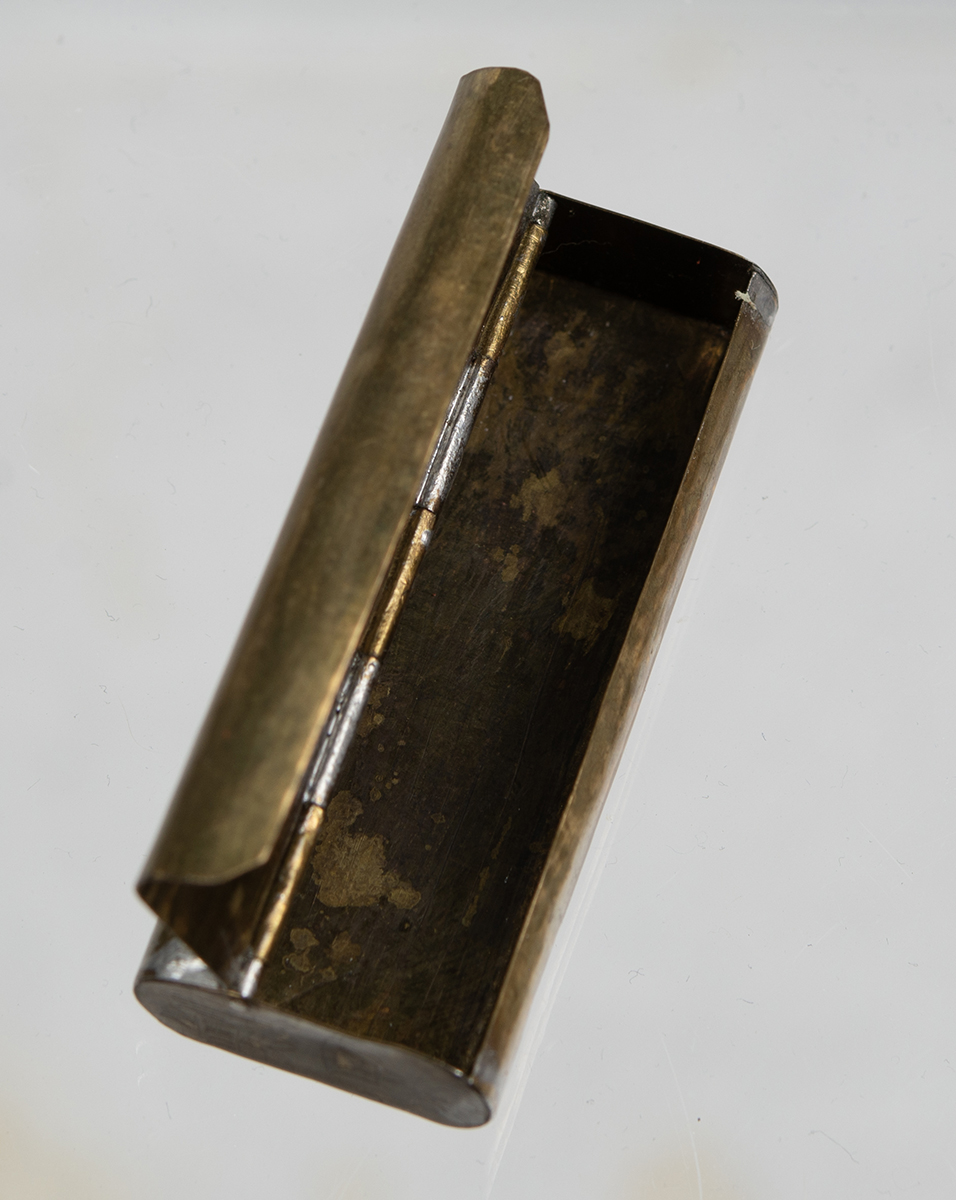
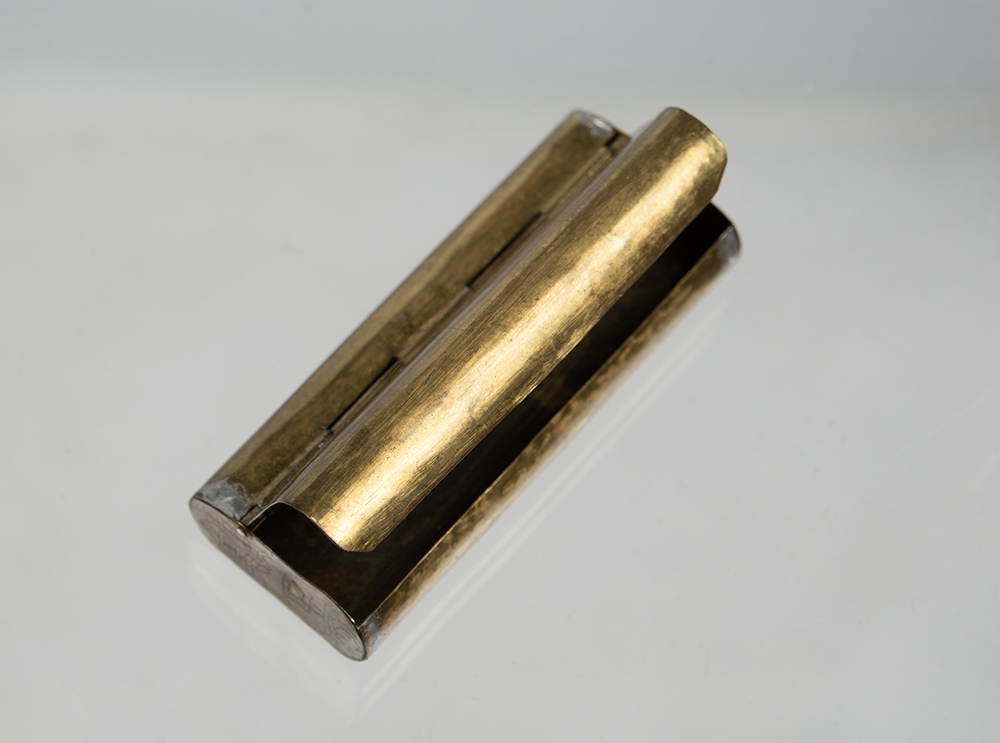
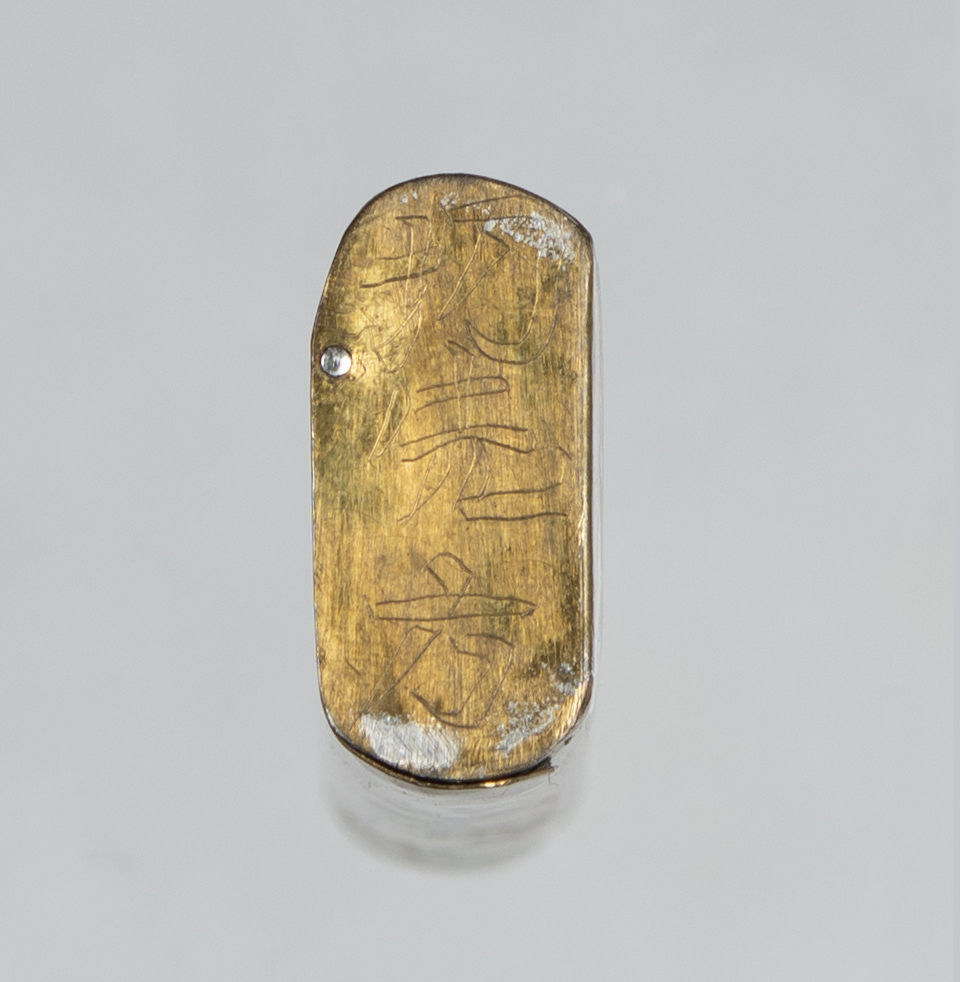

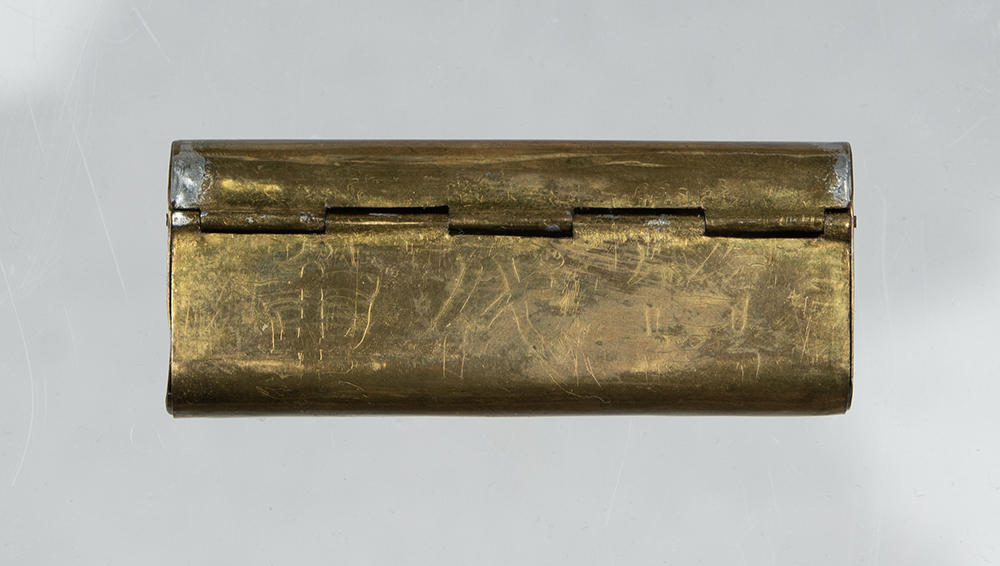
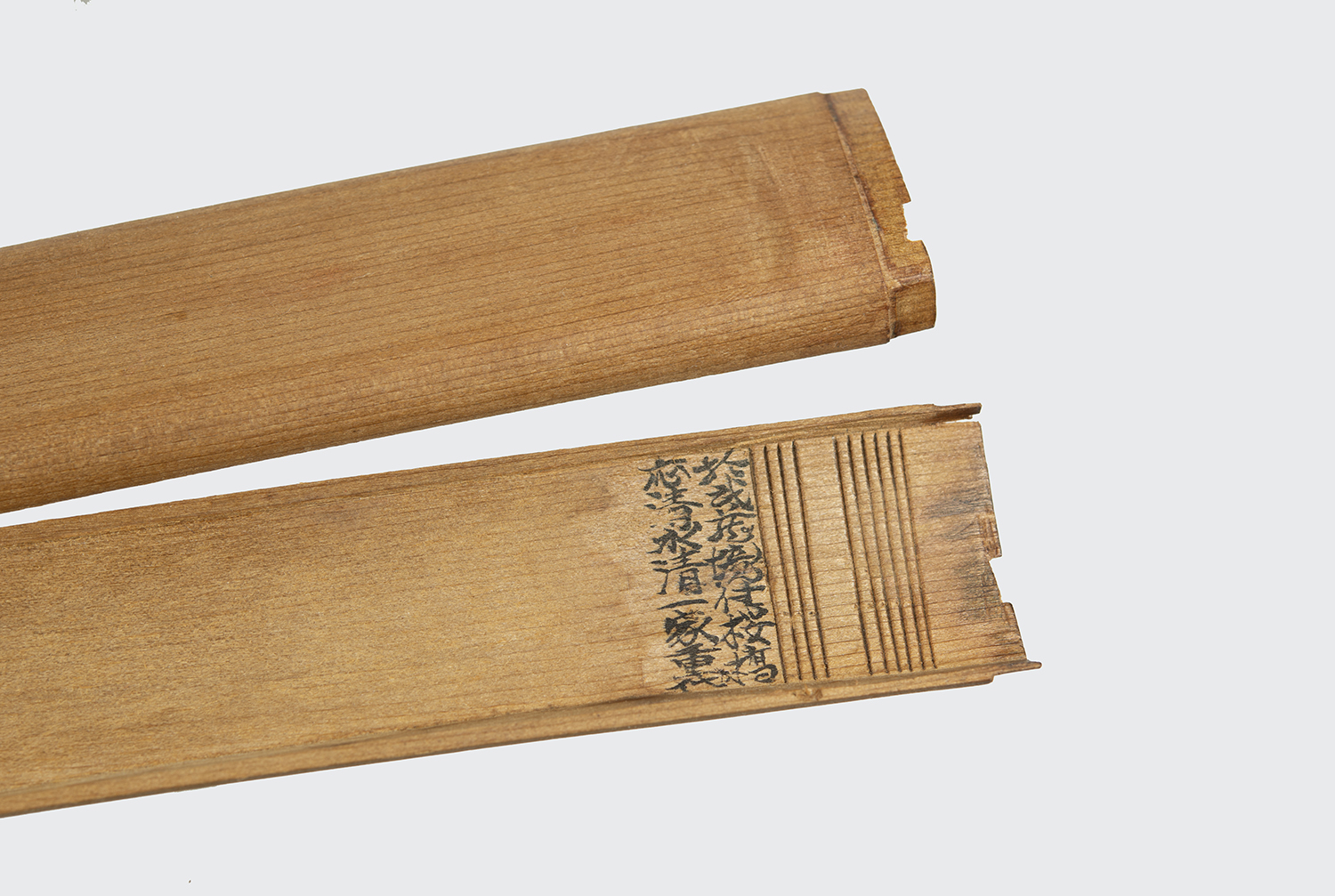
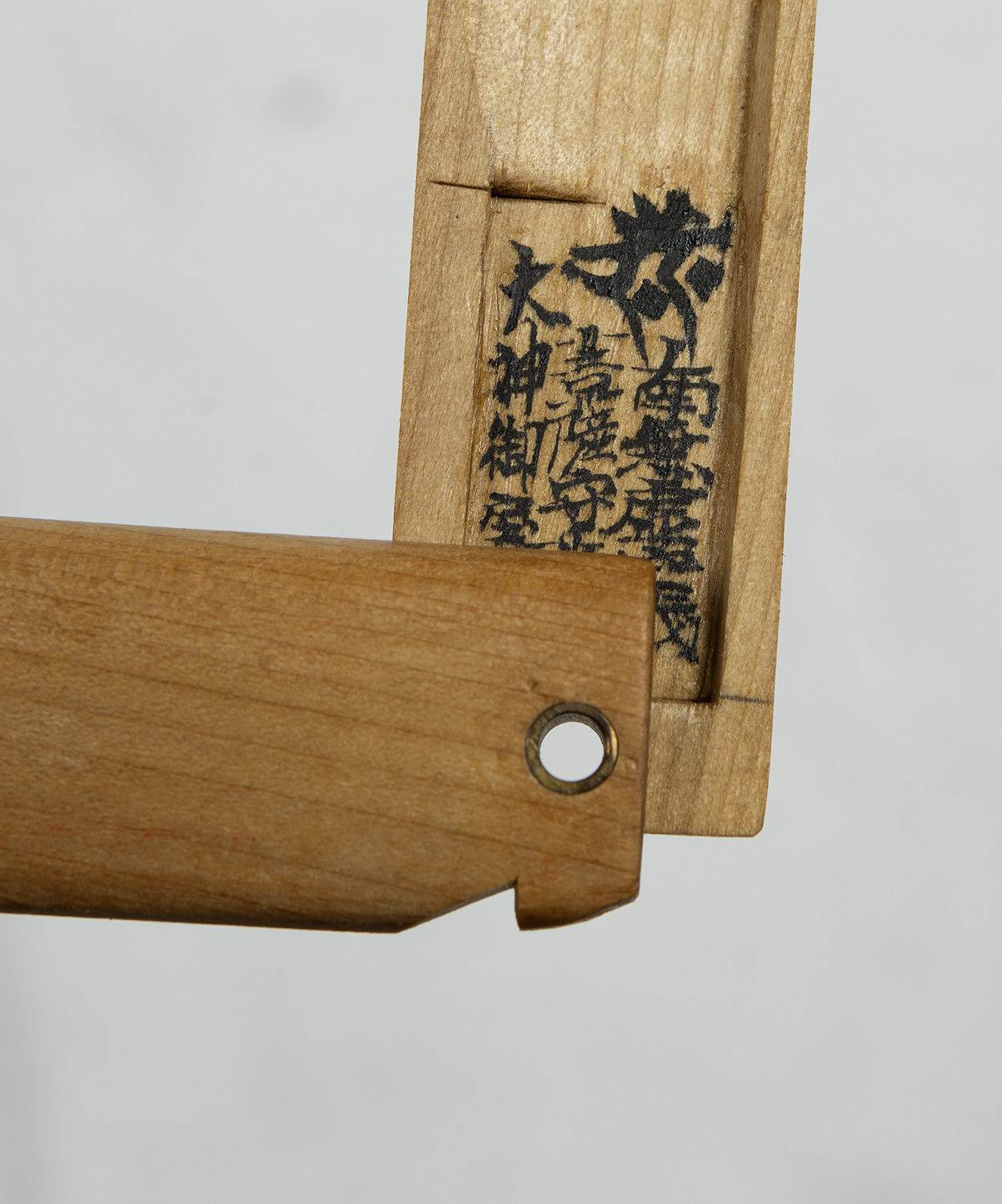
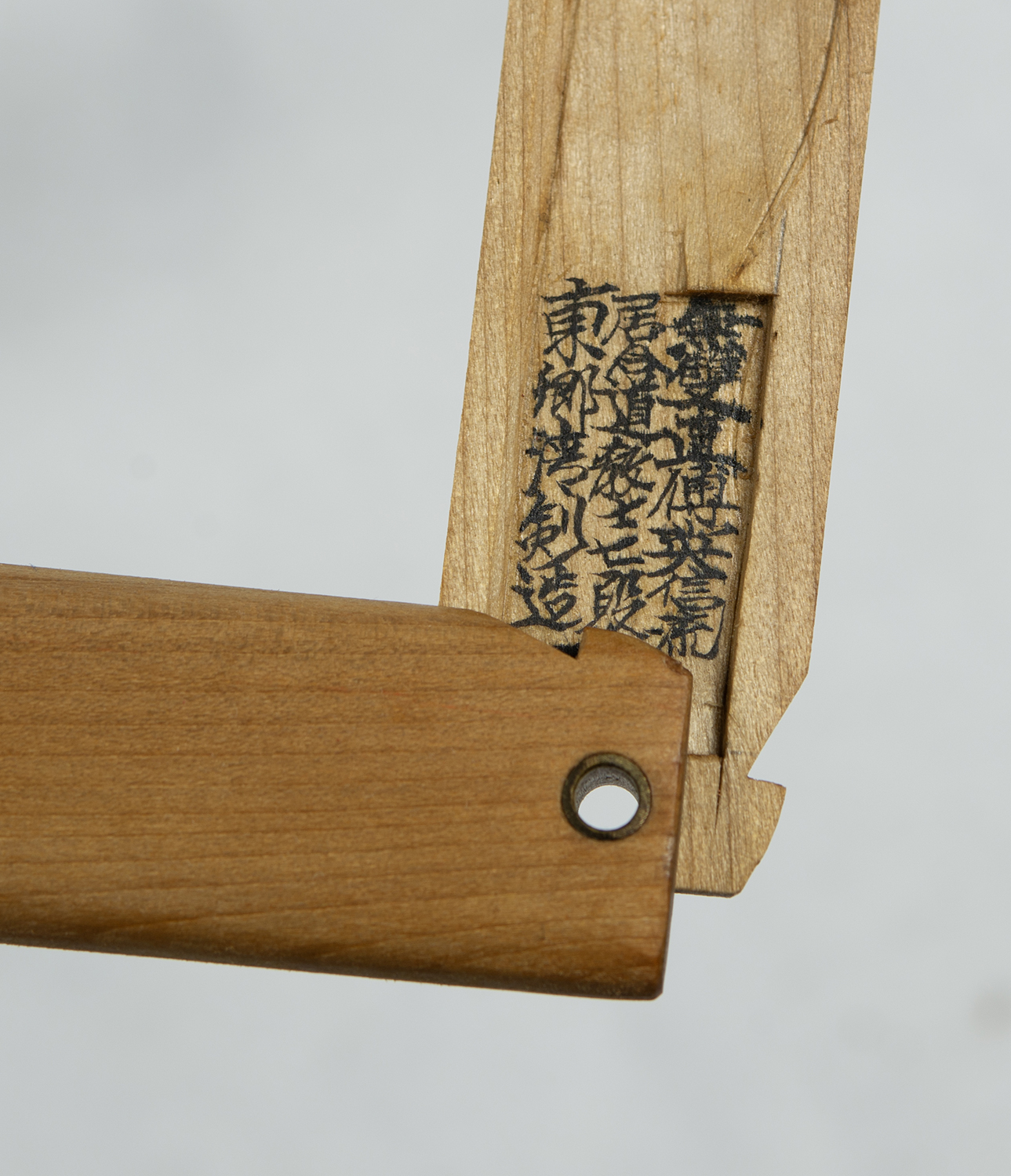
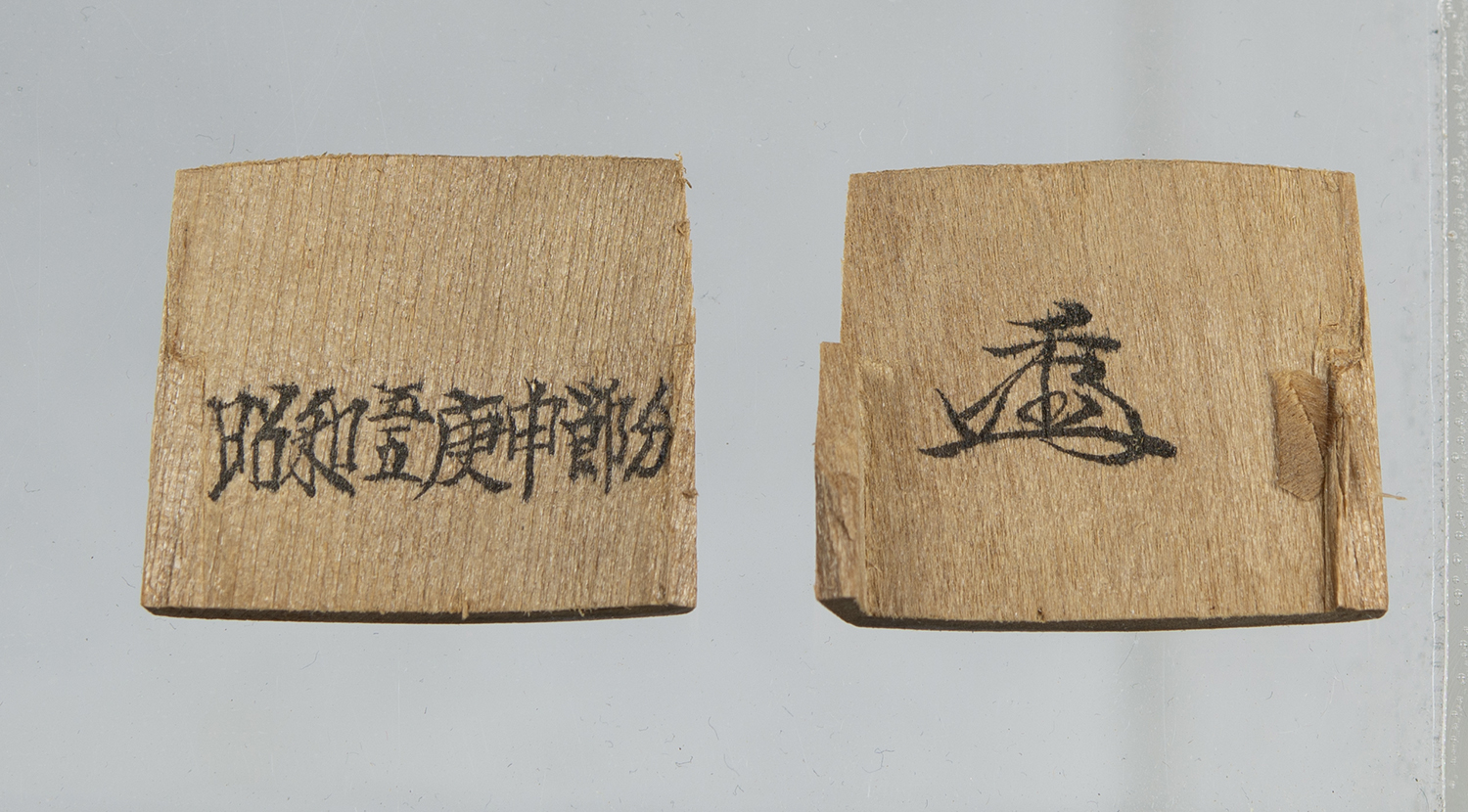
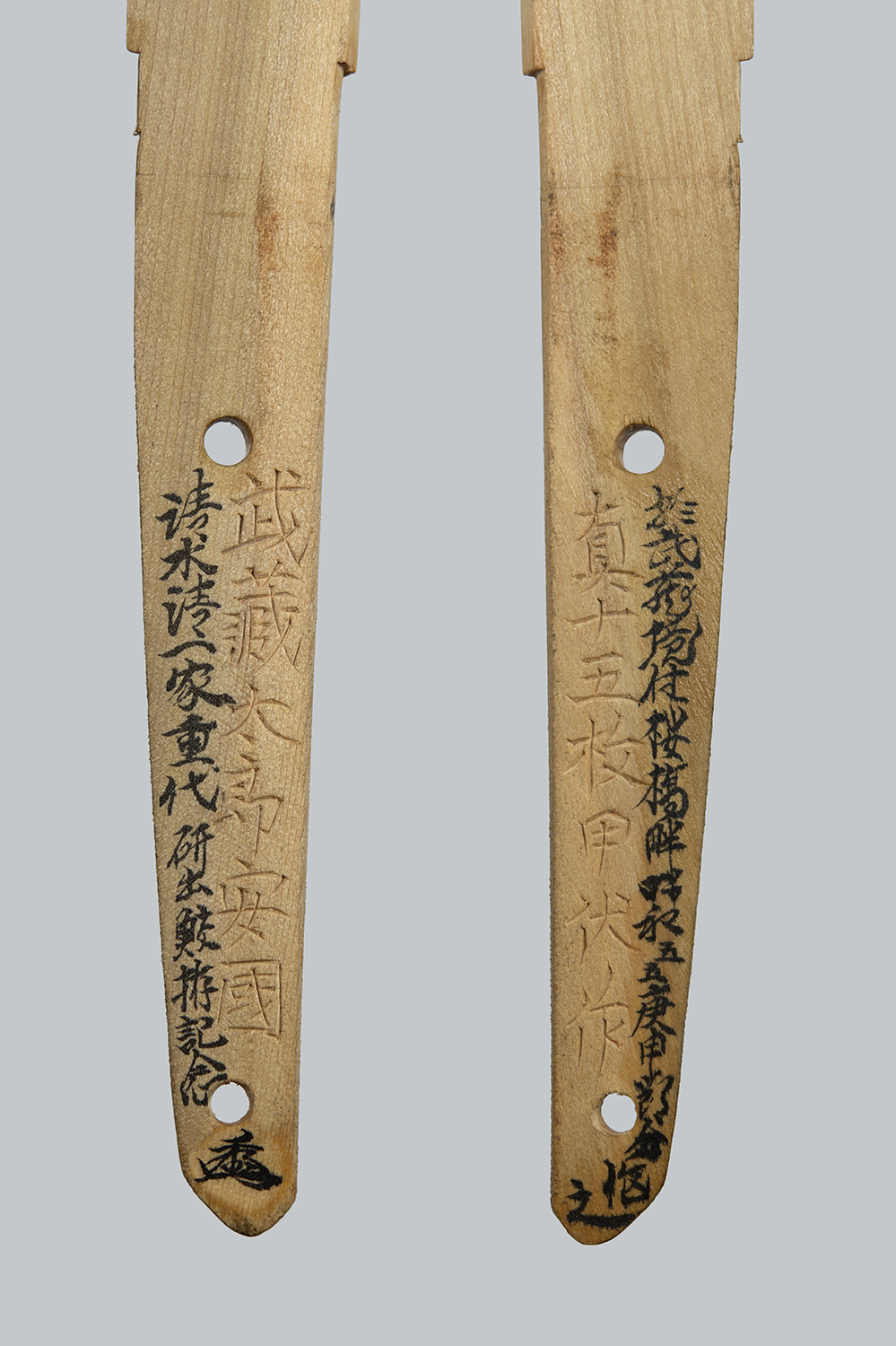
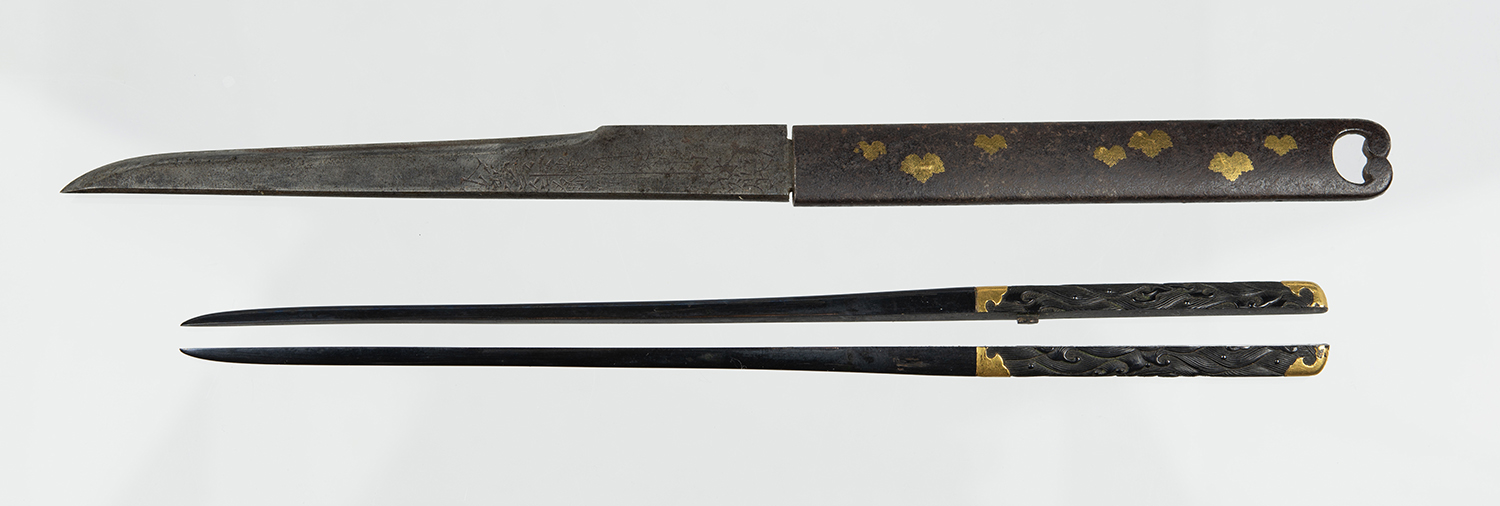
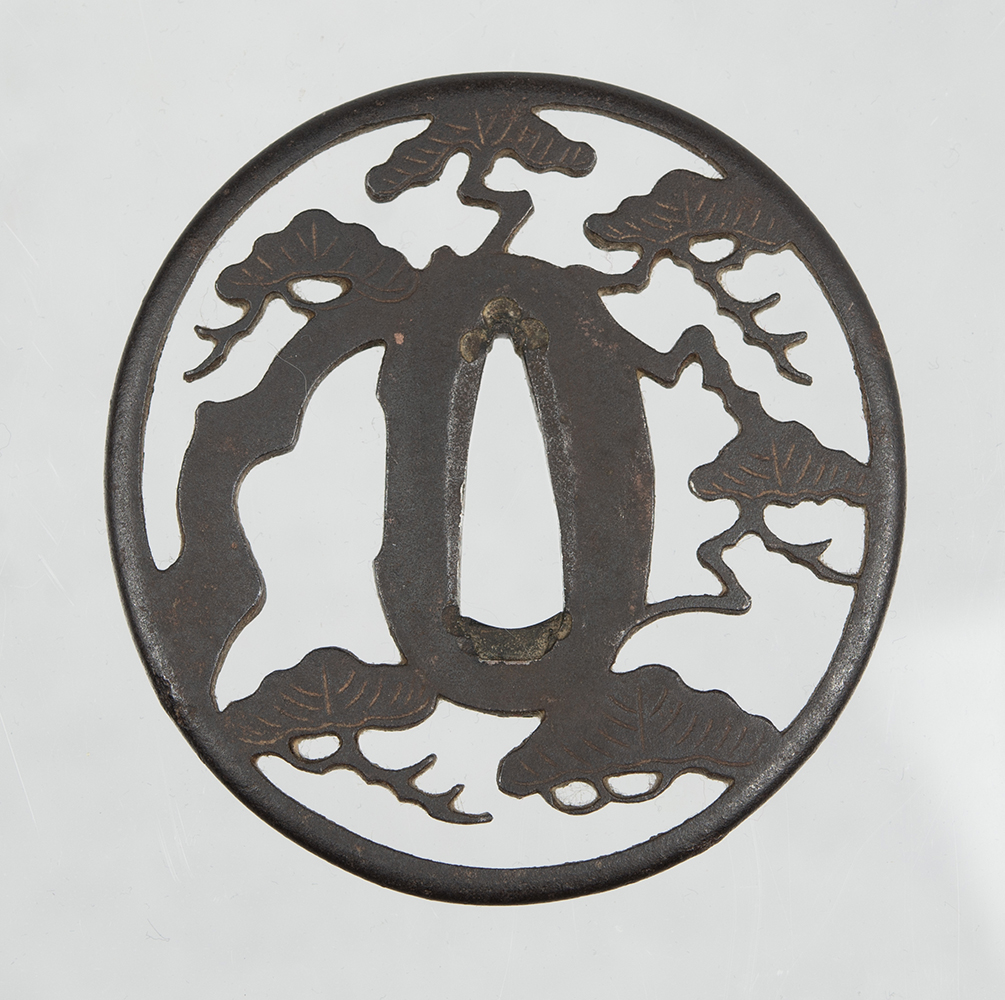
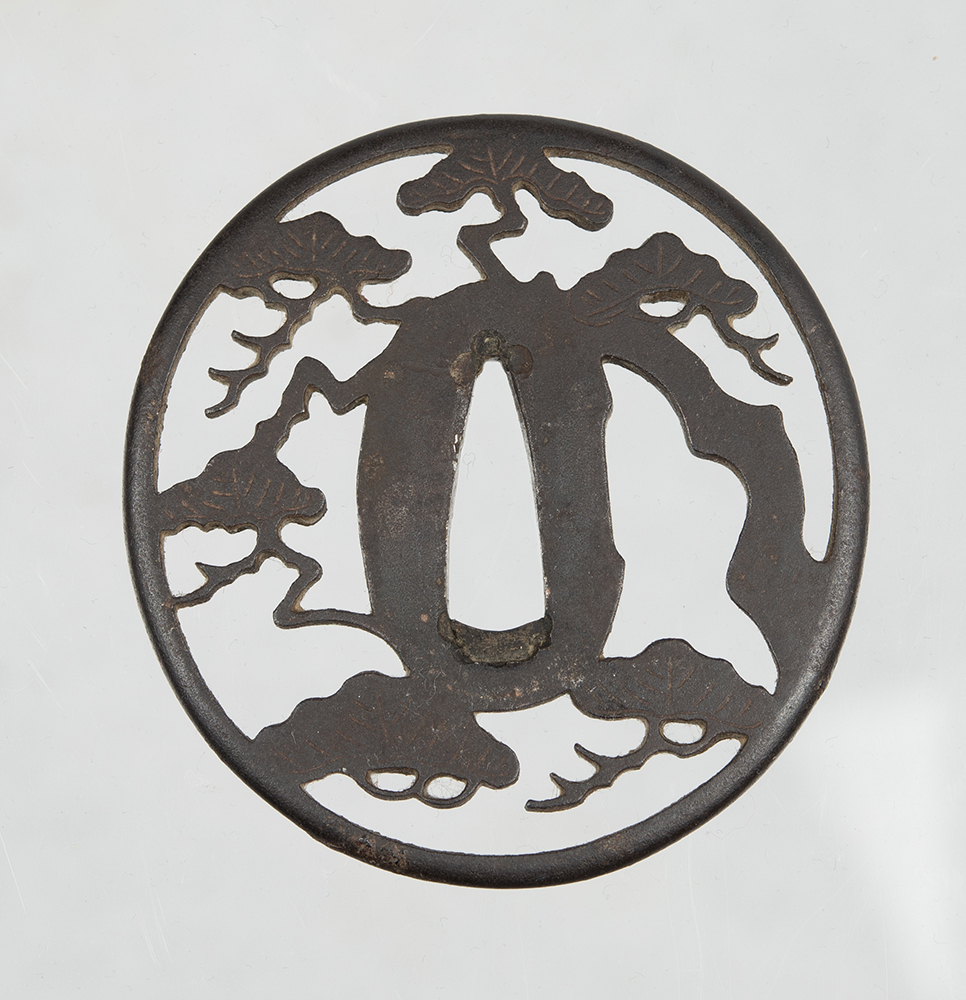


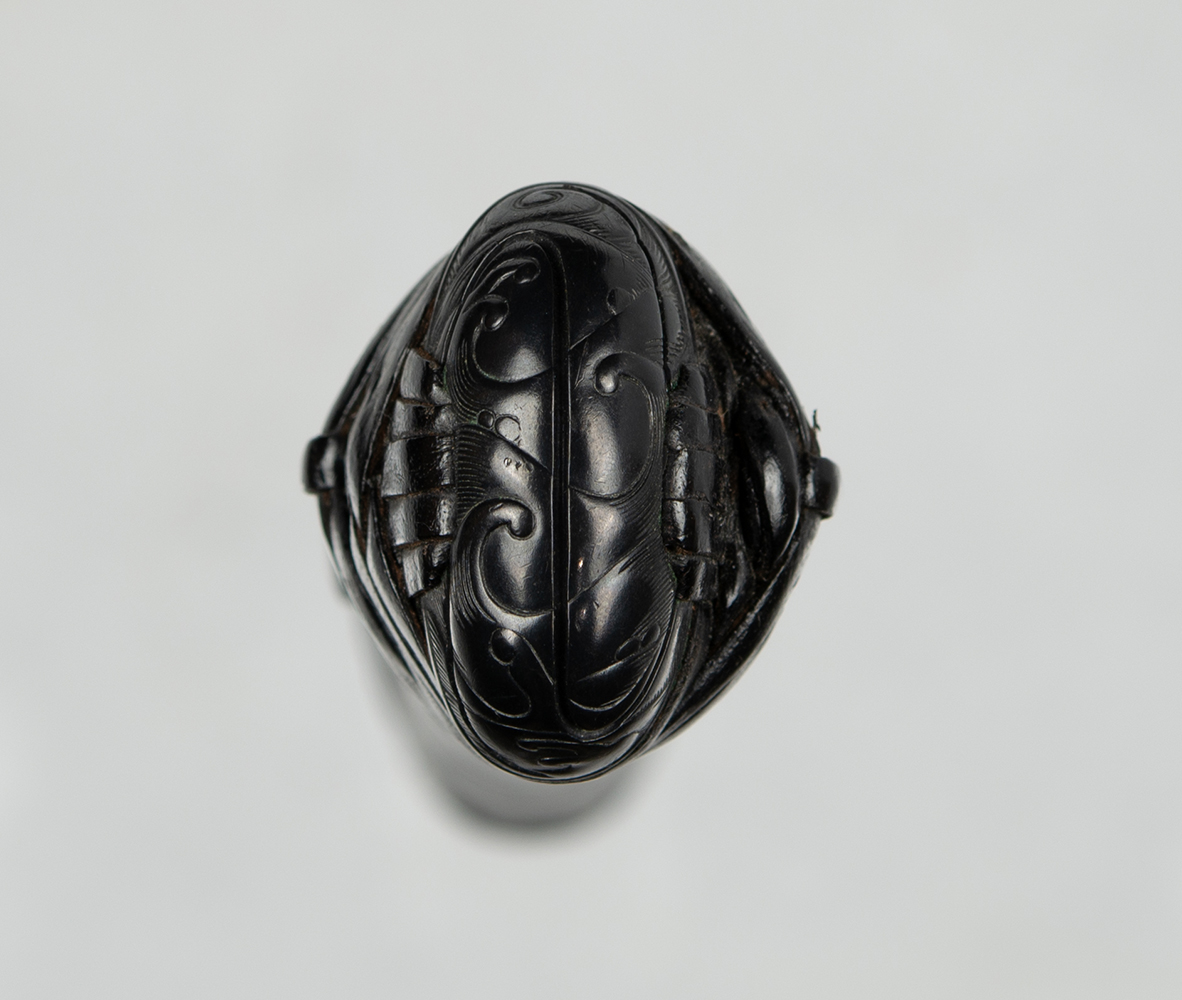
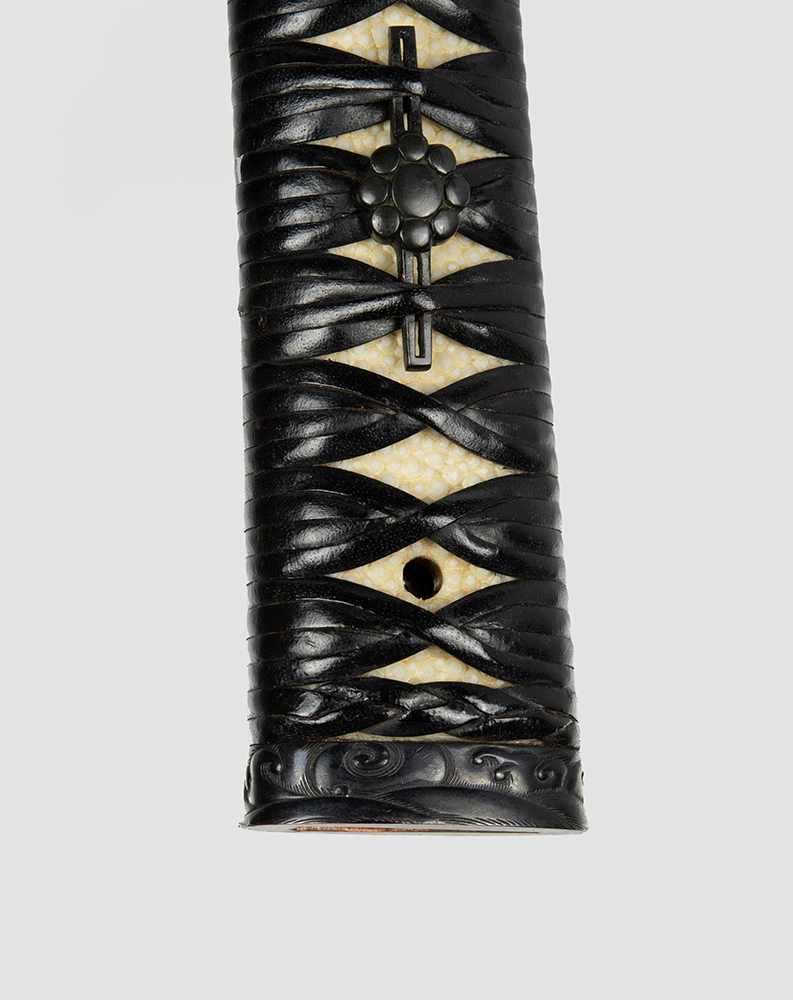


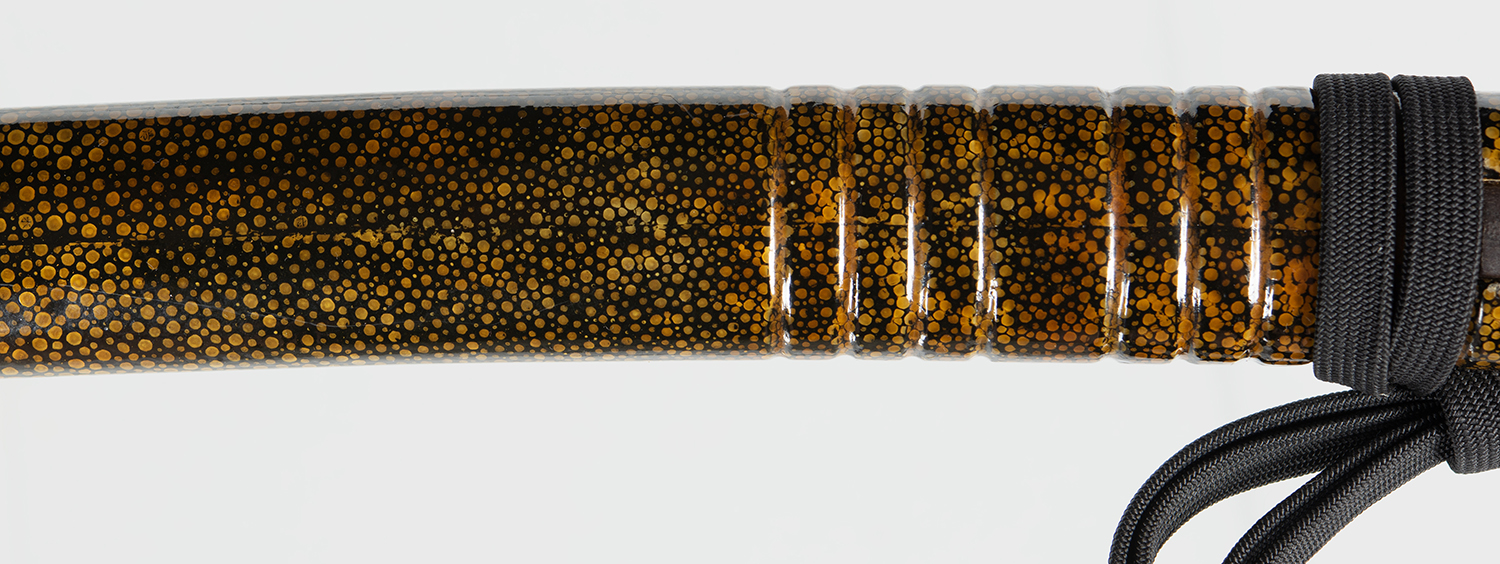

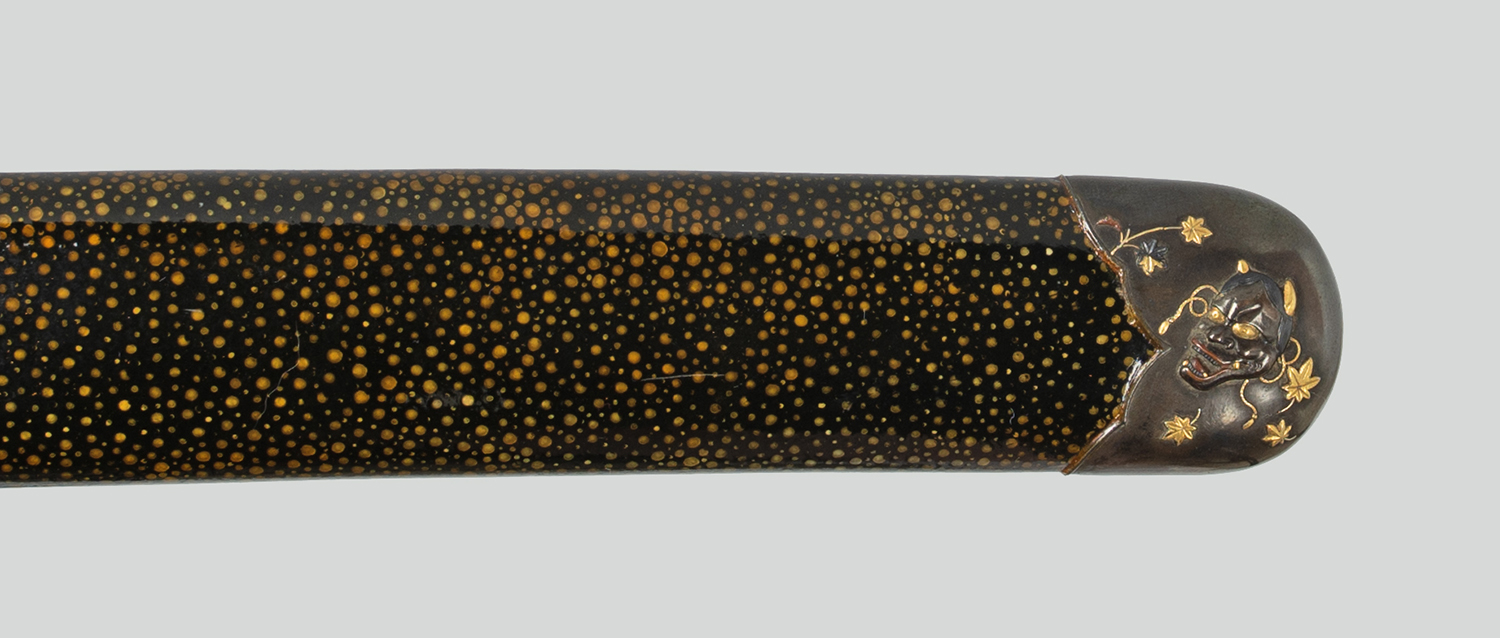
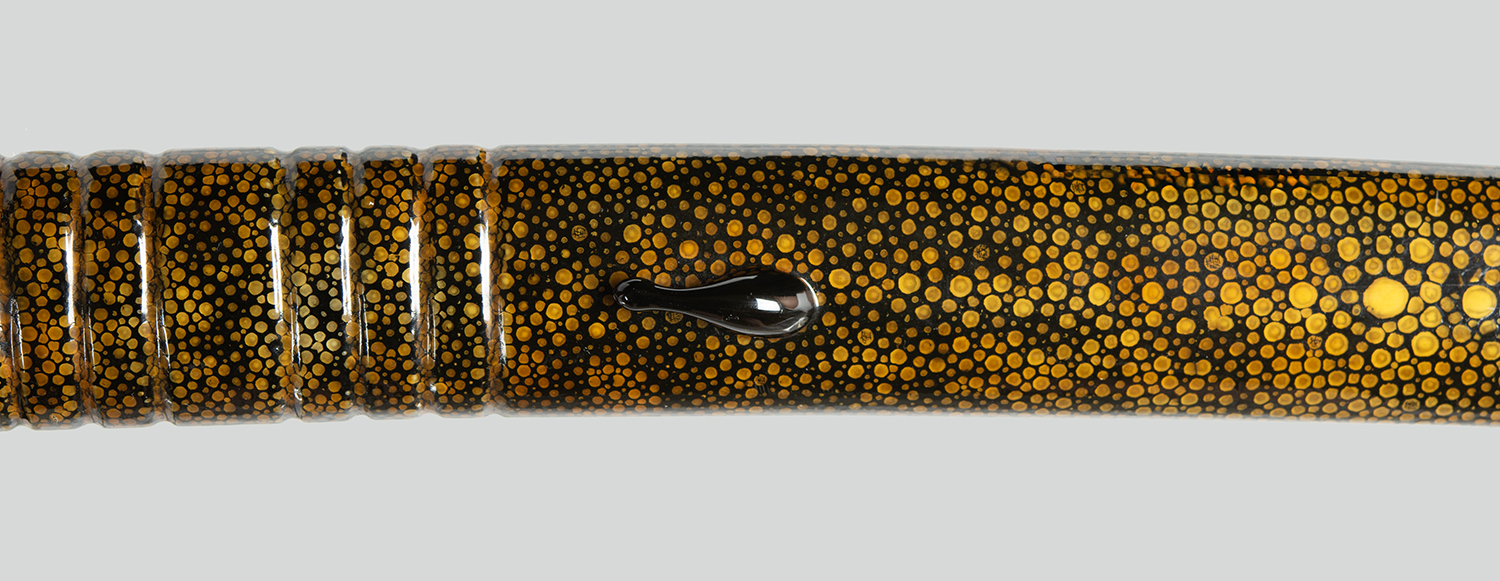

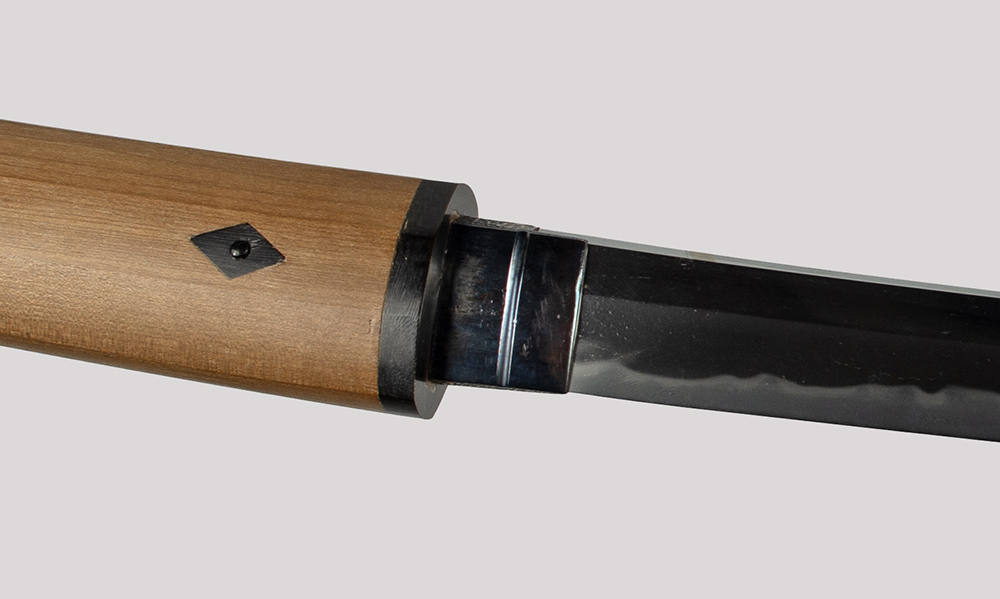
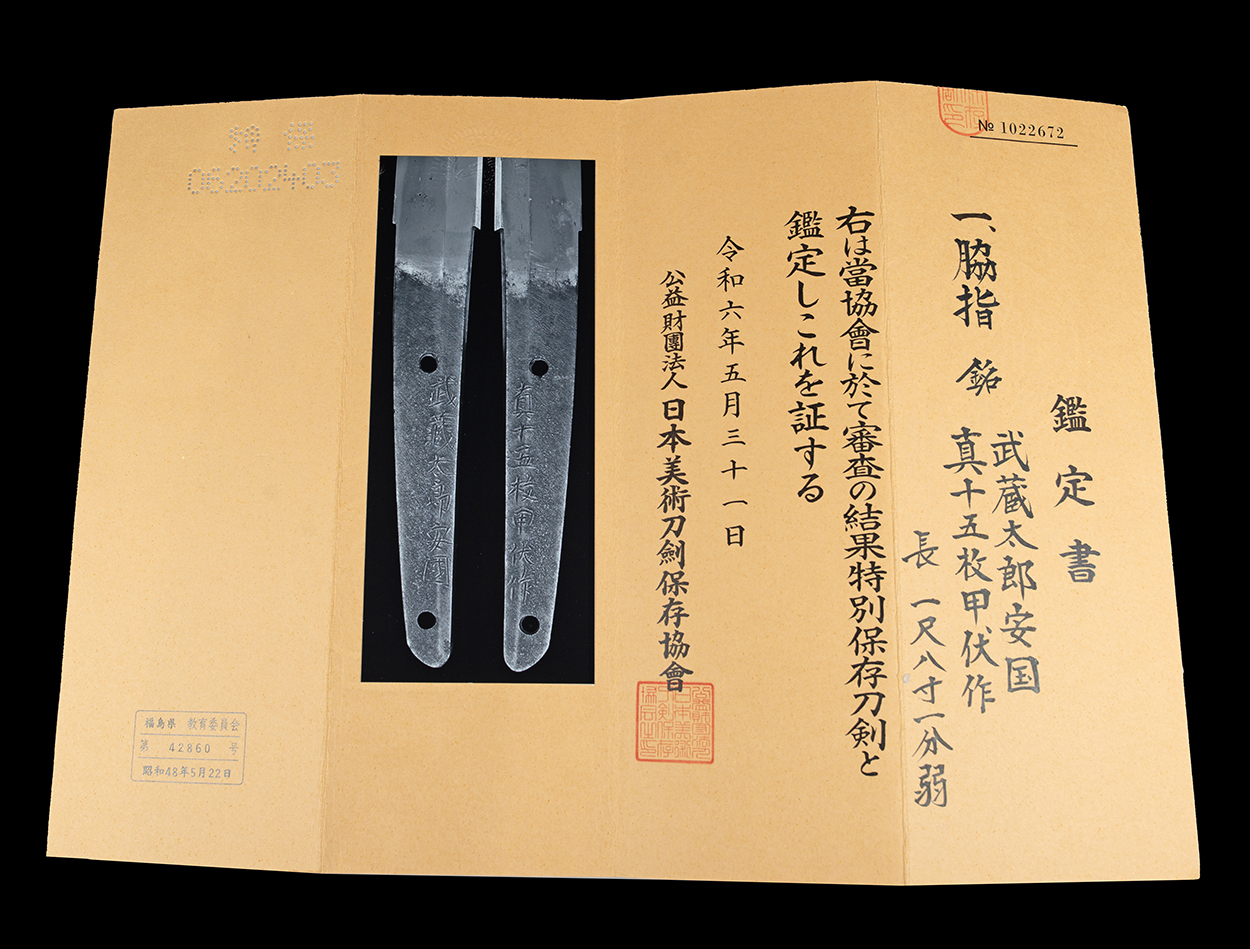
Back to Nihonto for sale
Yasukuni_1000th
